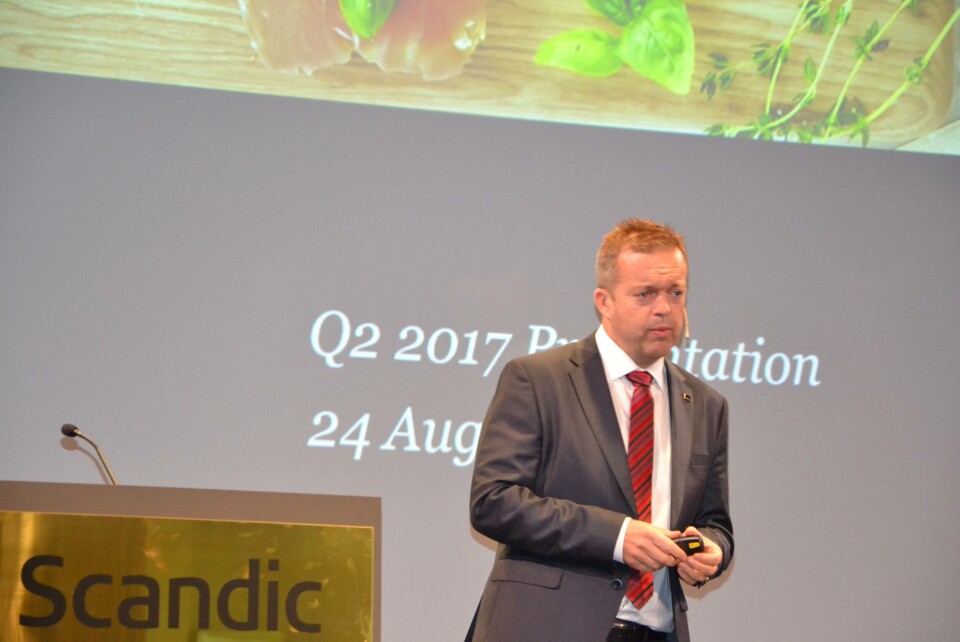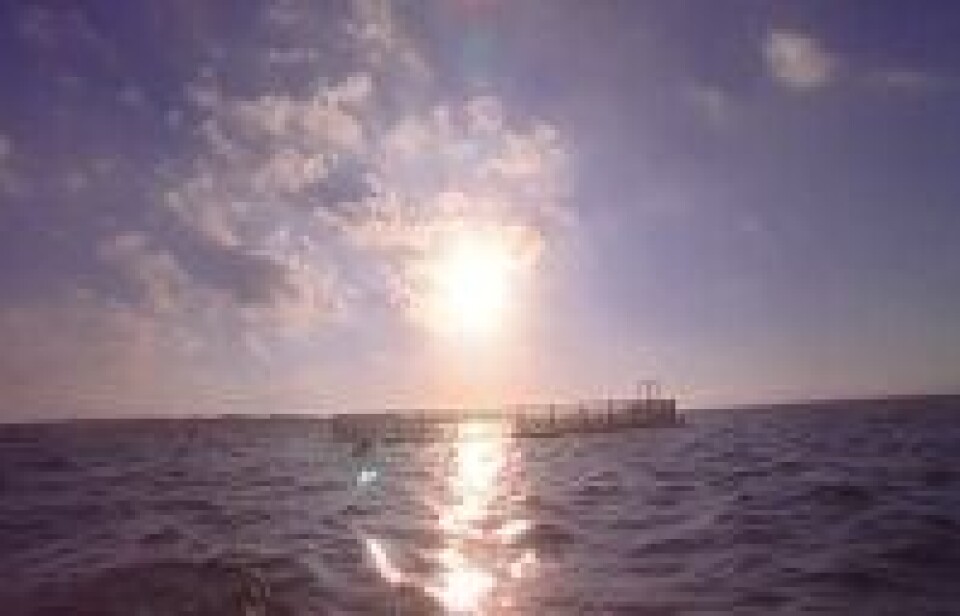
Marine Harvest chief praises Scotland
Marine Harvest’s chief executive, Alf Helge Aarskog, has pointed to Scotland and Ireland as the star performers in the second quarter of 2017.
Referring to the company’s Scottish operations, Aarskog said: “We had a fantastic quarter with low feed factor and high volumes. We had good control and good locations in the quarter. We are reducing the volume here to 10-11,000 tonnes, as we have taken out a lot of fish. We also expect some high expenses but continued good production here.”

Aarskog was equally pleased with results from Ireland. Speaking at the presentation of Marine Harvest’s Q2 results in Bergen yesterday, he said: “Ireland gave the best result countrywise per kilogram of fish produced. We are making more money in Ireland, on half of the volumes we have in Chile. We have great prices on the organic salmon.”
The CEO was also happy with operations in the Americas. “We are reasonably pleased with Canada in Q2,” said Aarskog. “We have challenges there as well but the situation is much better compared with the biology than it is in Norway.”
Increased volume
In Chile, Marine Harvest has increased volume to 7,700 tons.
“We had an algal bloom in Q2 last year, but right now it's reasonably good.”
It’s at home in Norway where Aarskog is least happy, particularly with problems caused by sea lice and with a lack of volume.
In terms of earnings, Marine Harvest had its best second quarter ever, but Aarskog countered: “As it is today, we’re selling a smaller volume of fish for more money. We have never had lower volumes for the quarter as long as I can remember.
“We have activities in many countries but the headaches are getting growth in Norway. We have not managed yet, but we do not give up hope.”
Marine Harvest, the world’s biggest salmon farmer, is stable at about 25,000 tonnes of contracts and in terms of price achieved for contracts against spot prices during the quarter, Aarskog thought this could have been better.
Costs too high
“We were unable to sell fish to the spot price in the quarter. We were below spot in the Norwegian portfolio largely because our contracts were below,” he said
“We have similar results in Canada, Scotland and Chile,” he added, without going into detail on it.
Regarding future prospects, he issued a clear message that production costs were too high.
“Norway is the challenge. We have never had lower volumes for the quarter as long as I can remember. When we have [only] 39,000 tons to distribute the costs, we struggle.”
Lice remain big threat
Aarskog stressed that lice are still the main challenge for both Marine Harvest and aquaculture in general.
“From when sea lice challenges began, it has resulted in low margins in the middle, where the problem is greatest.”
He also pointed out that the plague spread throughout Norway from Lofoten to Rogaland, where they operate.
“We have activity in Kvænangen that goes well with regard to lice and in Agder, it is also good for lice, but in general we are affected by the lice.”
“We must solve this,” he said, and listed several measures to combat lice such as wrasse, mechanical lice removers, lasers and more.
New technology
“Nevertheless, we have not overcome the lice. To grow production fivefold we need new technology within production or within vaccines, because what we are doing today is not enough,” he said.
“There is a key to growth in production and that is to solve the lice challenge in Norway.”
He nevertheless expects cost reductions due to higher volumes and fewer feed costs in Q3 and Q4 in Norway.
In summary, Aarskog was satisfied with the results, but the volumes must increase, he believes
“As it is today, we sell fewer fish for more money. It's awesome but we cannot do it long-term. We need to achieve growth and we must get it through new technology.”






















































